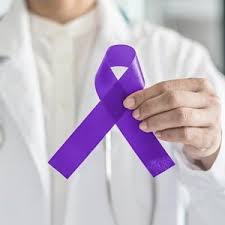
Men with early stage testicular cancer can safely receive one course of chemotherapy or radiotherapy after surgery without it having a long-term effect on their sperm count, according to a study published in the leading cancer journal Annals of Oncology [1] on February 25.
Although it is known already that several rounds of chemotherapy or high doses of radiotherapy given to men with more advanced testicular cancer can reduce sperm count and concentration, it has been unclear whether a single cycle of chemotherapy or radiotherapy would have a similar effect in men with stage I disease.
Dr, Kristina Weibring, a cancer doctor at the Hospital in Stockholm, Sweden, who led the study, said: “We wanted to examine in more detail if postoperative treatment, given to decrease the risk of recurrence after the removal of the tumorous testicle, would affect the sperm count and sperm concentration long term in testicular cancer patients with no spread of the disease. To our knowledge, no such study has been done before.
“This is important to find out, since treatment with one course of postoperative chemotherapy has been shown to decrease the risk of relapse substantially, thereby reducing the number of patients having to be treated with several courses of chemotherapy.”
Testicular cancer is the most common cancer in young men between the ages of 15 and 40. When it is diagnosed, all patients have the testicle containing the tumour removed, a surgical procedure called orchiectomy.
In this study, 182 men aged between 18 and 50, diagnosed with stage I testicular cancer and who had had an orchiectomy within the past five years, took part in the study between 2001 and 2006. They were treated either in Stockholm or Lund. After surgery, they received radiotherapy (14 fractions of 1.8 Gy each, up to a total dose of 25 Gy) or one course of chemotherapy, or were managed by surveillance, meaning there was no postoperative treatment. They provided semen samples after orchiectomy but before further treatment, and then six months, one year, two years, three years and five years thereafter. From 2006 onward, radiotherapy was no longer used as a standard treatment in Sweden because of the risk of causing secondary cancer.
“We found no clinically significant detrimental long-term effect in either total sperm number or sperm concentration, irrespective of the type of postoperative treatment received,” said Dr Weibring. “Among men who received radiotherapy, there was a distinct decrease in average sperm number and concentration six months after treatment, though not in those who received chemotherapy. However, sperm number and concentration recovered in the radiotherapy group after six months, and continued to increase in all groups up to five years after treatment.
“I am very excited to see these results as I wasn’t expecting sperm to recover so well after postoperative treatment. I didn’t expect as negative an effect as if the patient had received many courses of chemotherapy, since it is much more toxic, but I was not sure how much the sperm would be affected by one course.
“With the results of this study we can give the patients more adequate information on potential side effects from postoperative treatment. Testicular cancer patients are often young men wanting to father children at some point, and we find, in many cases, that the patients are afraid of the potential risk of infertility caused by chemotherapeutic treatment. These findings should provide some reassurance to them.”
A well-known problem for men diagnosed with testicular cancer is an impaired ability to create sperm. A condition called testicular dysgenesis syndrome, characterized by poor semen quality among other things, may play a role in this and is also associated with a higher risk of developing testicular cancer. In addition, the orchiectomy and the cancer itself may also affect sperm quality. The removal of one testicle does not necessarily affect a man’s sperm count and concentration as the remaining testicle can compensate.
Dr Weibring concluded: “Our results are promising but more studies are needed, and we still recommend sperm banking before orchiectomy as a number of patients may have low sperm counts at the time of diagnosis that persists after postoperative treatment. In addition, the type of testicular cancer and whether or not it will need further treatments are unknown factors before the orchiectomy. Assisted reproductive measures may be necessary for these patients regardless of any treatment given.”
Editor-in-chief of Annals of Oncology, Professor Fabrice André, Professor in the Department of Medical Oncology, Institut Gustave Roussy, Villejuif, France, commented: “This study, together with other research efforts, explores the paths to recovering a normal life after cancer. The finding that one course of chemotherapy has minimal impact on sperm count offers hope for thousands of patients worldwide, but we all must keep in mind that these data are preliminary and will require validation before we can use them in clinics. The next step will be to establish how to predict the toxic effects on sperm count of different chemotherapy regimens.”
REFERENCE
[1] “Sperm count in Swedish clinical stage I testicular cancer patients following adjuvant treatment”, by Kristina Weibring et al. Annals of Oncology. doi:10.1093/annonc/mdz017
The research was supported by grants from the Swedish Government Funding for Clinical Research, the Swedish Cancer Society, Gunnar Nilsson’s Cancer Fund, Malmo University Hospital Foundation for Cancer Research and Foundation for Urological Research, and King Gustaf V’s Jubilee Fund for Cancer Research.
